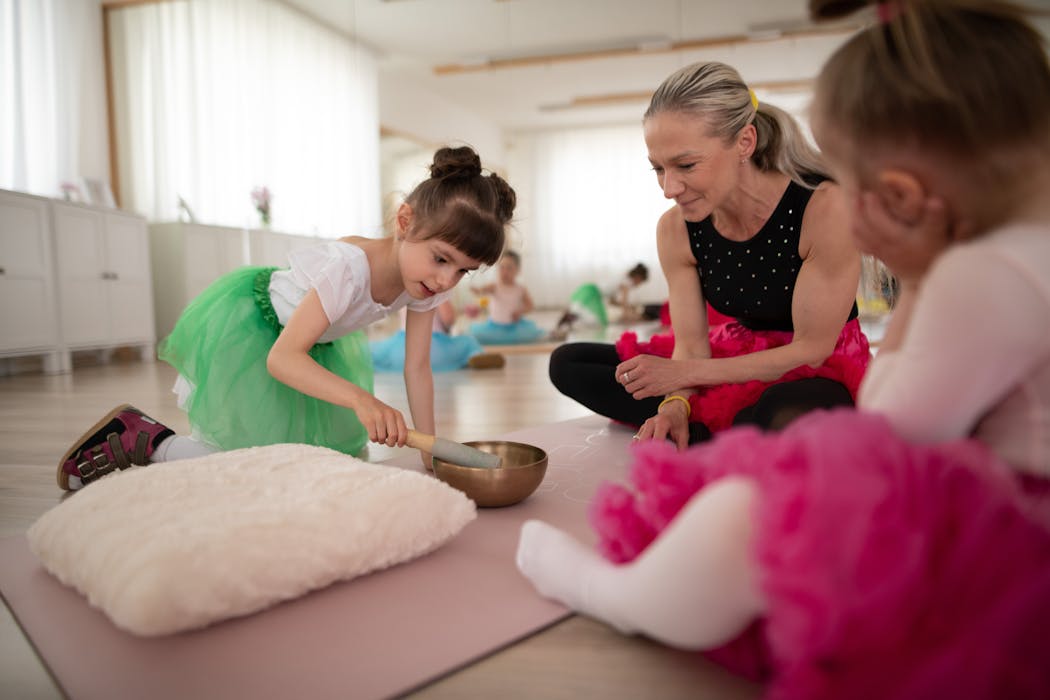Dance therapy, also known as dance/movement therapy, is a form of therapy that uses movement and dance to promote emotional, physical, and mental well-being. It is a holistic approach that recognizes the mind-body connection and the power of movement to facilitate healing. Dance therapy can be used to address a wide range of issues, including trauma, anxiety, depression, and stress.
The history of dance therapy dates back to the early 20th century when pioneers such as Marian Chace and Rudolf Laban began exploring the therapeutic potential of movement and dance. Over the years, dance therapy has evolved and gained recognition as a legitimate form of therapy. Today, it is practiced in various settings, including hospitals, schools, rehabilitation centers, and private practices.
The benefits of dance therapy are numerous. It can help individuals express and process emotions, improve body awareness and self-esteem, reduce stress and anxiety, enhance communication skills, and promote overall well-being. Dance therapy provides a safe and non-verbal outlet for individuals to explore their feelings and experiences, allowing for healing and personal growth.
Understanding Trauma and its Effects on the Body
Trauma is defined as a deeply distressing or disturbing experience that overwhelms an individual’s ability to cope. It can result from a single event or a series of events and can have long-lasting effects on a person’s physical, emotional, and psychological well-being. Types of trauma include but are not limited to: physical abuse, sexual abuse, neglect, domestic violence, natural disasters, accidents, and war.
When an individual experiences trauma, their body goes into survival mode. The fight-or-flight response is activated, leading to an increase in heart rate, blood pressure, and stress hormones. Over time, if the trauma is not processed and resolved, it can lead to chronic physical symptoms such as headaches, digestive issues, chronic pain, and immune system dysfunction. Trauma can also have a profound impact on mental health, leading to symptoms such as anxiety, depression, flashbacks, nightmares, and difficulty concentrating.
How Dance Therapy Can Help with Trauma Recovery
Dance therapy can be a powerful tool for trauma recovery. It provides a safe and supportive environment for individuals to explore and process their trauma through movement and dance. Dance therapy works by integrating the mind, body, and emotions, allowing for a holistic approach to healing.
Research has shown that dance therapy can be effective in reducing symptoms of trauma and improving overall well-being. A study published in the Journal of Traumatic Stress found that dance therapy was effective in reducing symptoms of post-traumatic stress disorder (PTSD) in women who had experienced sexual trauma. Another study published in the Journal of Dance Medicine & Science found that dance therapy improved body image and self-esteem in individuals with a history of trauma.
Compared to other forms of therapy, dance therapy offers a unique approach to trauma recovery. Traditional talk therapy may not always be effective for individuals who have difficulty expressing their emotions verbally or who have experienced trauma that is stored in the body. Dance therapy provides an alternative way to process trauma through movement and expression, allowing for a deeper level of healing.
Preparing for Dance Therapy: Creating a Safe and Supportive Environment
Creating a safe and supportive environment is crucial for the success of dance therapy sessions. A safe environment allows individuals to feel comfortable and supported as they explore their emotions and experiences through movement. Here are some tips for creating a safe and supportive environment:
1. Establish clear boundaries: It is important to establish clear boundaries at the beginning of each session. This includes setting expectations for behavior, confidentiality, and physical contact.
2. Create a judgment-free zone: Encourage participants to let go of self-judgment and embrace their unique expression. Create an atmosphere where mistakes are seen as opportunities for growth and learning.
3. Foster a sense of community: Encourage participants to support and encourage each other throughout the session. Create opportunities for group bonding and connection.
The dance therapist plays a crucial role in creating a safe and supportive environment. They should be empathetic, non-judgmental, and skilled in creating a space where individuals feel safe to explore their emotions and experiences. The dance therapist should also be trained in trauma-informed care and have a deep understanding of the impact of trauma on the body and mind.
Exploring Movement: Simple Exercises to Connect with Your Body
Connecting with the body is an essential part of dance therapy. Many individuals who have experienced trauma may have disconnected from their bodies as a way to cope with the overwhelming emotions and sensations associated with trauma. Here are some simple exercises to help individuals connect with their bodies:
1. Body scan: Lie down on a comfortable surface and close your eyes. Slowly scan your body from head to toe, noticing any areas of tension or discomfort. Take deep breaths and imagine sending breath and relaxation to those areas.
2. Grounding exercises: Stand with your feet hip-width apart and imagine roots growing from the soles of your feet into the ground. Feel the support of the earth beneath you and take deep breaths, allowing yourself to feel grounded and centered.
3. Free movement: Put on some music that resonates with your emotions and allow yourself to move freely. Let go of any expectations or judgments and simply allow your body to express itself through movement.
Incorporating movement into your daily routine can also help you stay connected with your body. This can include activities such as walking, yoga, tai chi, or any other form of movement that feels good to you.
Moving Through Emotions: Dance Therapy Techniques for Processing Trauma
Dance therapy offers a variety of techniques for processing trauma and working through difficult emotions. These techniques can help individuals express and release emotions, gain insight into their experiences, and promote healing. Here are some examples of dance therapy techniques for processing trauma:
1. Authentic movement: Authentic movement is a technique that involves allowing the body to move freely without judgment or direction. The individual closes their eyes and allows their body to move in response to their inner experiences. This can be a powerful way to access and express emotions that may be difficult to put into words.
2. Guided imagery: Guided imagery involves using visualization techniques to explore and process traumatic experiences. The individual is guided through a series of images and sensations that help them connect with their emotions and gain insight into their experiences.
3. Dance improvisation: Dance improvisation involves allowing the body to move spontaneously in response to music or internal impulses. This can be a powerful way to release pent-up emotions and explore different ways of moving and expressing oneself.
It is important to note that dance therapy techniques should always be facilitated by a trained dance therapist who can provide guidance and support throughout the process. Working through difficult emotions during dance therapy can be challenging, but with the support of a skilled therapist, it can lead to profound healing and transformation.
Cultivating Mindfulness and Self-Awareness through Dance
Mindfulness and self-awareness are essential components of trauma recovery. Mindfulness involves being fully present in the moment, without judgment or attachment to thoughts or emotions. Self-awareness involves having a deep understanding of one’s thoughts, emotions, and physical sensations. Dance therapy can help cultivate mindfulness and self-awareness through movement and embodiment practices.
During dance therapy sessions, individuals are encouraged to pay attention to their body sensations, emotions, and thoughts as they move. They are guided to notice any areas of tension or discomfort in the body, as well as any emotions that arise during the movement. By bringing awareness to these sensations and emotions, individuals can gain insight into their experiences and begin to release and heal.
Incorporating mindfulness and self-awareness into your dance therapy practice can also be beneficial. This can include practices such as meditation, deep breathing, journaling, or any other activity that helps you connect with yourself and cultivate a sense of presence and self-awareness.
Finding Your Rhythm: Using Music to Enhance Dance Therapy Sessions
Music plays a vital role in dance therapy. It can enhance the therapeutic experience by creating a supportive and immersive environment for individuals to explore their emotions and experiences. Music has the power to evoke emotions, memories, and sensations, making it a powerful tool for trauma recovery.
When selecting music for dance therapy sessions, it is important to consider the individual’s preferences, cultural background, and emotional needs. Different types of music can evoke different emotions and sensations, so it is important to choose music that resonates with the individual’s experiences and goals for therapy.
Soft, soothing music can help create a calm and safe environment for individuals who may be experiencing anxiety or fear. Upbeat, rhythmic music can help energize and uplift individuals who may be feeling stuck or stagnant. It is also important to consider the tempo, volume, and lyrics of the music, as these factors can have a significant impact on the individual’s emotional state.
Healing Trauma through Group Dance Therapy
Group dance therapy can be a powerful tool for healing trauma. It provides a supportive community where individuals can connect with others who have had similar experiences and share their journey of healing. Group dance therapy offers a sense of belonging, validation, and support that can be instrumental in the recovery process.
In a group dance therapy session, individuals have the opportunity to witness and be witnessed by others as they express themselves through movement. This can create a sense of connection and empathy that is often lacking in individual therapy sessions. Group members can offer support, encouragement, and feedback to each other, creating a safe and nurturing environment for healing.
Group dance therapy also provides opportunities for social interaction, communication skills development, and the exploration of interpersonal dynamics. It can help individuals develop trust, empathy, and healthy boundaries, which are essential for healing from trauma.
Incorporating Dance Therapy into Your Trauma Recovery Journey
Incorporating dance therapy into your trauma recovery journey can be a transformative experience. Here are some tips for incorporating dance therapy into your trauma recovery journey:
1. Set clear intentions: Before starting dance therapy, take some time to reflect on your goals and intentions for therapy. What do you hope to gain from the experience? What areas of your life do you want to focus on? Setting clear intentions can help guide your dance therapy practice and keep you focused on your healing journey.
2. Be patient and gentle with yourself: Healing from trauma takes time and patience. It is important to be gentle with yourself and allow yourself to progress at your own pace. Remember that healing is not linear, and there may be ups and downs along the way. Trust the process and be kind to yourself as you navigate your trauma recovery journey.
3. Seek support: It is important to have a support system in place as you embark on your trauma recovery journey. This can include friends, family members, support groups, or a therapist who specializes in trauma. Having a support system can provide encouragement, validation, and guidance as you navigate the challenges of healing.
Dance therapy can complement other forms of therapy such as talk therapy, cognitive-behavioral therapy (CBT), or eye movement desensitization and reprocessing (EMDR). Each form of therapy offers unique benefits and approaches to healing, and combining different modalities can enhance the overall effectiveness of treatment.
It is important to find a qualified dance therapist who has experience working with trauma survivors. A qualified dance therapist should have a master’s degree in dance/movement therapy, be registered with the American Dance Therapy Association (ADTA), and have experience working with trauma survivors. It is also important to feel comfortable and safe with the dance therapist, as the therapeutic relationship is a crucial component of the healing process.
Embracing the Freedom and Empowerment of Movement
In conclusion, dance therapy is a powerful tool for trauma recovery. It offers a unique and holistic approach to healing that integrates the mind, body, and emotions. Dance therapy provides a safe and supportive environment for individuals to explore and process their trauma through movement and dance.
The benefits of dance therapy for trauma recovery are numerous. It can help individuals express and process emotions, improve body awareness and self-esteem, reduce stress and anxiety, enhance communication skills, and promote overall well-being. Dance therapy offers a non-verbal outlet for individuals to explore their feelings and experiences, allowing for healing and personal growth.
By creating a safe and supportive environment, connecting with the body, processing emotions through movement, cultivating mindfulness and self-awareness, using music to enhance sessions, participating in group dance therapy, and finding a qualified dance therapist, individuals can incorporate dance therapy into their trauma recovery journey and embrace the freedom and empowerment of movement.
Find out how Torongo Therapyplus can help you with your needs. Get in touch with us at smile@torongo.life, or call us on 02 8809 9965.































